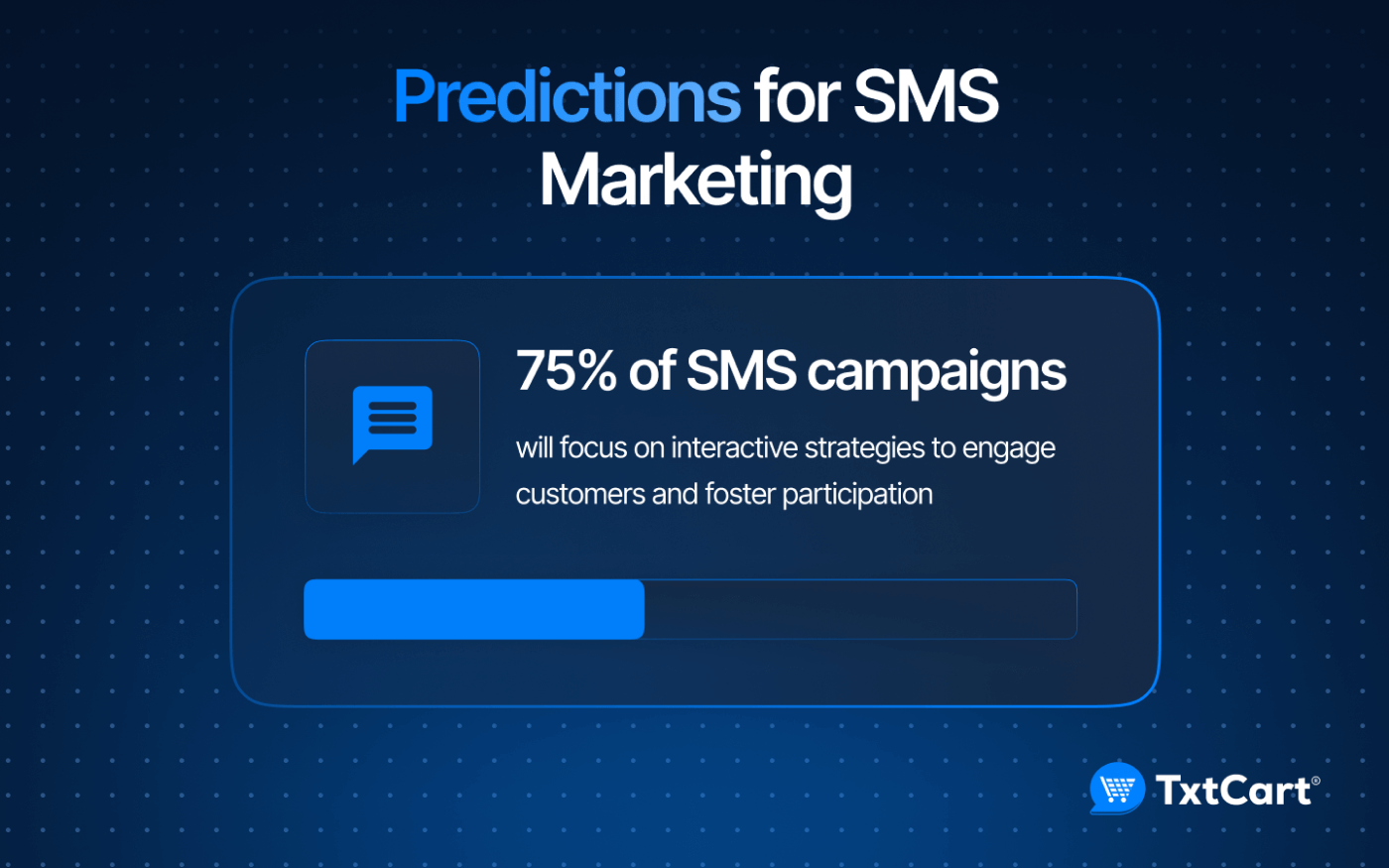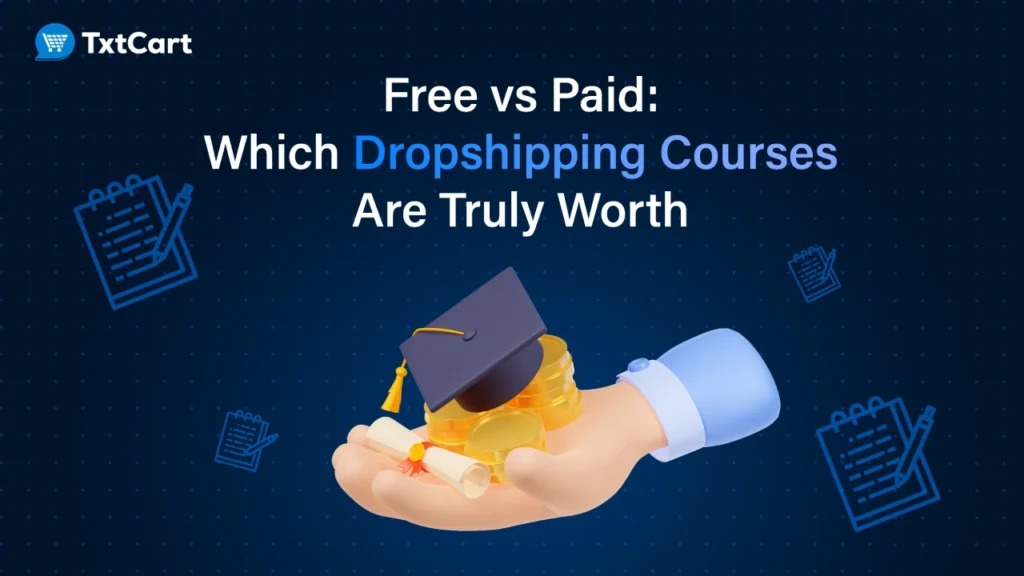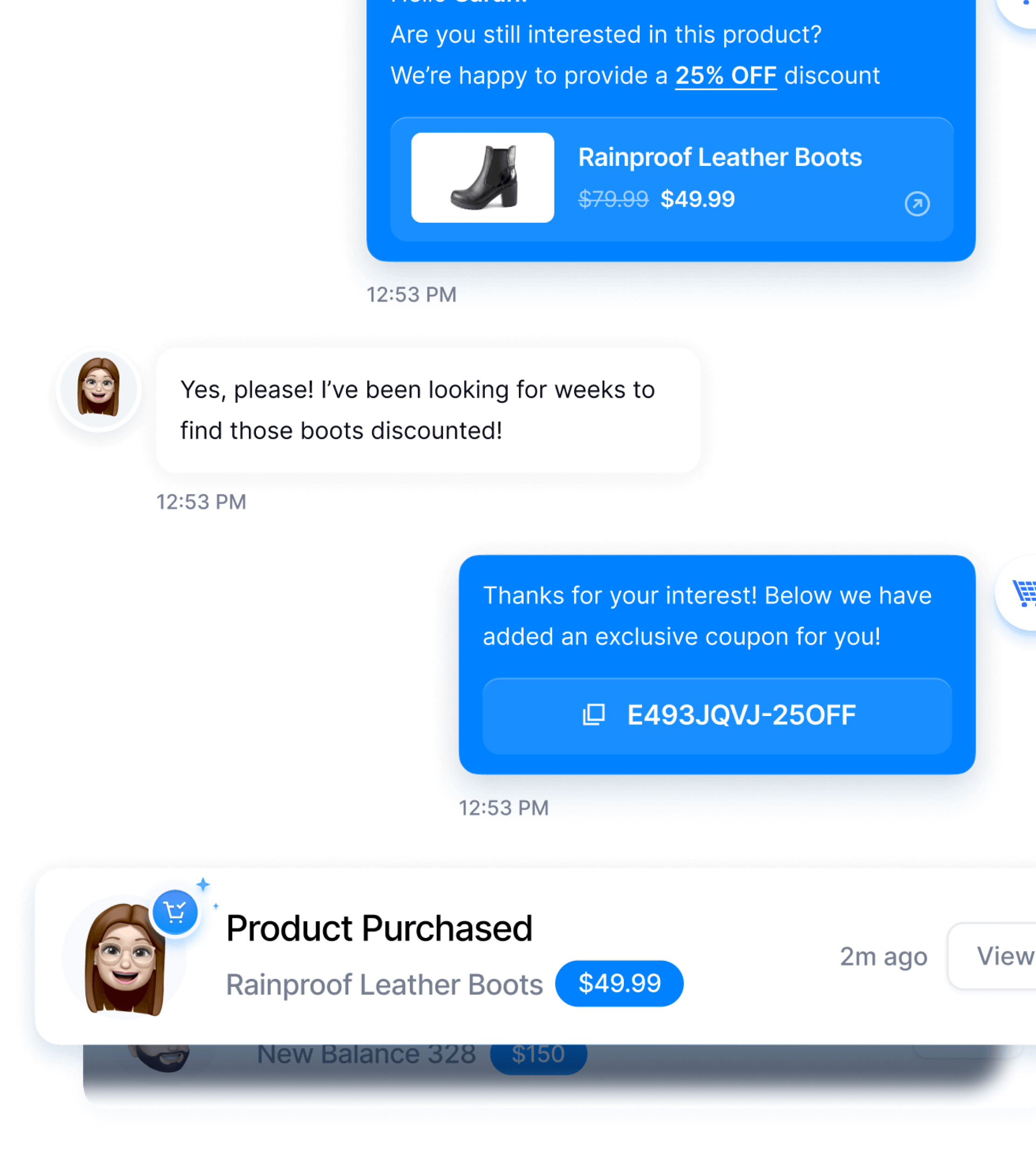Want to make the most of text marketing? Here are the SMS marketing trends you need to catch up with.
An average person spends around five hours a day on the mobile phone. Apart from personal and work chats, phone calls, and browsing apps, these hours also include activities related to shopping and eCommerce.
Whether it’s checking an order update, clicking on a back in stock notification SMS from a brand, or chatting with customer support for updates, people now prefer to receive communication from brands via SMS. Customers are 4.5x likely to respond to text messages.
Why? Because SMS is fast, quick, short, and personal.
eCommerce businesses, too, have come up with robust SMS marketing strategies owing to strong competition in this space.
In this blog, we look at some of the top trends of SMS marketing. And if any of these are missing in your Shopify SMS marketing plan, it’s time you get it started right away!
Install TxtCart for your Shopify SMS marketing strategy.
12 SMS marketing trends to follow for your Shopify store
SMS marketing trends continue to evolve as states release new rules and regulations. Let’s take a look at some of the SMS marketing trends based on consumer behavior:
1. Transactional or informational, SMS is the preferred channel
Whether it’s a clothing store, a cab service, or a food delivery app, all kinds of businesses share updates via SMS. Customers, too, prefer to receive updates via SMS. 91% of customers say they prefer to receive communication from brands via text messages.
Whether they’re real-time updates about an order confirmation or an announcement for the annual sale, SMS has come to become the most preferred channel of communication between brands and customers.
It is handy, quick, instant, and short. All these factors make it an easy communication channel to follow and keep up with.
Some instances when brands have used SMS to communicate important information with their customers:
- When the site is going to be down for maintenance work. Banks send these text messages often
- When there’s a change of ownership or management
- When there’s a public apology
- When there’s a good news to celebrate
2. More personalized outbound messages
Brands obviously want to engage customers more. And one of the best ways to do so is personalization. Whether you’re sharing product recommendations or incentives to customers, sending personalized messages increases its potential to spark a conversation with the customers. Personalization is one of the biggest SMS marketing trends that has picked up across industries and businesses.
Some use cases for personalized outbound messages:
- Personalized SMS to help revive abandoned carts
- Personalized messages to help gather feedback and reviews easily
- It makes communication more relevant and enhances customer experience
- In situations when you need to target customers for re-marketing
3. Two-way SMS communication is the way to go
Gone are the days when brands used to speak to customers. Now, they speak with customers. There’s an exchange, a conversation between the two. Even though the ultimate goal of a text message may be sales, it shouldn’t feel like a transactional conversation. Two-way SMS enables that human touch.
Automated and scripted messages stop working beyond a point. Many times, customers want to ask questions, know more, and engage deeper with brands. At such times, it’s important to give them the option to reply to your text message.
Two-way SMS has many benefits:
- It adds warmth to your interactions
- It helps release customers’ anxiety when they know they’re chatting with a person, not a machine
- It helps nurture long-term customer relationships
- It creates upsell and cross-sell opportunities
- It helps revive abandoned cart sales
Here’s an example:

4. SMS is outgrowing other channels such as email
SMS open rate = 98%
Email open rate = 20%
Research shows the open rate of SMS is 4x that of email. While email was the chosen method for businesses to communicate with customers, SMS has now taken over it.
Earlier, when brands used SMS to communicate with clients, it was looked upon as invasive or unprofessional. But over the years, that perception has changed. There are many reasons for that – SMS is a quicker and easier channel to read messages. On email, most people ignore emails from brands thinking they’ll check it later. But SMS is read within three minutes of receiving it.
Almost every eCommerce brand has some level of SMS marketing in their strategy, especially for sharing real-time updates such as order confirmation, order dispatched, order delivered, etc. And the use of SMS is only going to increase going forward.
5. SMS has become a top revenue generation channel
SMS has reached a point where ecommerce brands now consider its business potential to generate revenue. Whether the text message is to welcome a new customer, to nurture a lead from an abandoned cart or to offer a personalized incentive to push a shopper to make a purchase, SMS can help with all of these, and more.
Moreover, moving further, businesses will have to rely less on third-party cookies and more on data collected directly from customers. SMS can be that tool that helps collect data directly from customers. Brands that are able to combine direct data generation and SMS, can gain positive results for revenue generation.
Some reasons why SMS marketing can help you generate revenue:
- 62% of the world’s population own a smartphone
- An increasing number of consumers now prefer brands to communicate via SMS
- Mobile payment options make it easy for customers to shop from their phones
- SMS has a higher potential for personalization driven by data analysis
6. Buy over SMS helps brands improve sales
One of the most effective things that’s happened to SMS is the ‘reply-to-buy’ feature. What does it mean? It means customers simply have to reply to your promotional SMS by typing ‘yes’ or ‘buy’ or any other word you may choose to buy the item.
In this form of SMS marketing, the customer’s contact, payment and other details are already registered with the brand. Once the customer responds positively, the sale is automatically done.
This feature has made it extremely easy for eCommerce brands to sell products. Here’s why it works so well:
- There are less steps for customers to go through to make a purchase
- M-commerce is growing and this feature is a step further in enhancing customer experience
- It’s much faster and convenient for customers than many other purchase processes
- Brands can combine this feature with FOMO and urgency to boost sales
7. Reorder reminders work best on SMS
Reorder or replenishment SMS campaigns are a common part of Shopify SMS marketing strategies. With more customers choosing to shop from their mobile phones, brands have also started shifting email alerts to SMS alerts to send replenishment reminders. Because it makes it easy for customers to make purchases directly from the phone.
With subscription models picking up in almost every kind of business, reorder reminders via SMS enable quick, fast and seamless purchase experience. Owing to the nature of the message – that it’s a reminder, customers are more likely to place orders as soon as they read the text messages. They can instantly place the order through their smartphones, as they do not want to forget to order.
8. SMS turns customer service into sale opportunities
One of the most powerful benefits of SMS is that it is a conversational platform. And hence, it works well for customer service. For example, if you enable two-way SMS conversations, customers can ask questions to you via text. 52% of consumers say they would use text to interact with customer support.

However, the key is to respond in time. If you take more time than expected to respond, it’s going to be useless for the customer.
Because SMS allows the possibility of having a conversation, you can engage the customer by driving the conversation in the direction of a sale. Let’s understand this with an example:
Say, a customer asked you about a color variant of a bag on your site. You don’t have that particular color that the customer asked for, but you have others. What can you do? You could respond to the customer offering a discount on the other colors to increase the possibility of the customer changing their mind and buying the product that you have because it’s at a discount.
Here are some best practices to follow for customer service via SMS:
- Keep it conversational
- Respond in time
- Make your response useful and informational
- Make the response actionable
- Personalize your response
9. Brands are getting more competitive on SMS
Just like email and social media, brands are now beginning to become extremely competitive over SMS. Every brand wants to attract customers’ attention via SMS and turn their SMS strategy into returns.
And when there’s too much of anything, customers tend to get picky. It’s impossible for most people to follow more than a handful of brands. Customers might not want to allow every brand to reach them via SMS. And hence, they might subscribe to just a few brands.
The question is, is your brand one of those? How are you going to ensure you remain a brand that customers opt-in to?
Here are some best practices for SMS:
- Get permission from customers before sending them messages
- Use short codes
- Always be compliant with SMS regulations
- Keep it conversational and respond in real-time
- Monitor and analyze what works
10. Focusing on creating SMS lists is important
With increasing competition in the SMS marketing space, it’s going to get more difficult for brands to create SMS lists and get customers to sign up on the channel. And so, brands will need to come up with strategies to increase their SMS opt-ins.
Here are some ways in which you could collect phone numbers based on where the customer is in their journey on your site:
- When new shoppers visit your site, you could try pop-ups to encourage them to share their phone number
- When customers make their first purchase, get permission from them on the thank you page to send you SMS updates
- When customers sign up for back in stock alerts, encourage them to sign up via SMS by giving them an incentive
Here’s an example:

11. Restock alerts are most preferred via SMS
When shoppers sign up for back in stock notifications, it means they are interested in the product. This means there is some kind of a purchase intent already. This is a good opportunity for your Shopify store to grow your SMS list. Why SMS? Because it has higher conversion potential owing to its instantaneous nature.
Here’s what you can do: Try a SMS only restock alert.
You can use a restock alert app to automate the process. As soon as an item goes out of stock on your site, your ‘Buy Now’ button should turn to ‘Notify Me Via SMS’. Shoppers that are genuinely interested in the product, will definitely share their phone numbers. Besides, you will be sure you’re adding authentic subscribers to your SMS list.
Here’s an example.

12. Most reviews and feedback are collected via SMS
SMS has made the feedback and review collection process more easy. To collect feedback on their purchase experience, brands send SMSes as soon as customers complete a purchase. This instantaneous nature makes it easy for brands to collect feedback as the experience is still fresh in the customer’s mind.
Similarly, brands request for reviews via SMS. Reviews and feedback collected at different stages of the customer’s journey add value to brands. Since SMS enables brands to connect to customers on a personal level, poor feedback and reviews can be addressed quickly, turning an unpleasant experience into one that is positive.
Are you following these Shopify SMS marketing trends?
The popularity and capabilities of SMS are rising. Brands are getting more creative with their SMS marketing strategies. If you’ve not joined these trends yet, you might get left behind. To get your SMS marketing campaigns started, you can use a tool like TxtCart.







